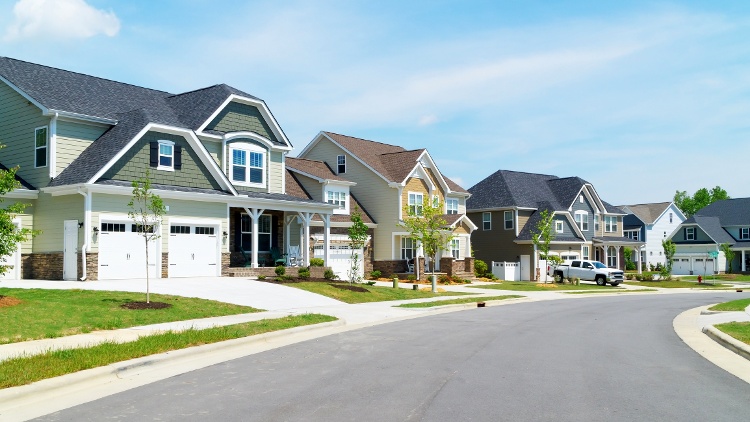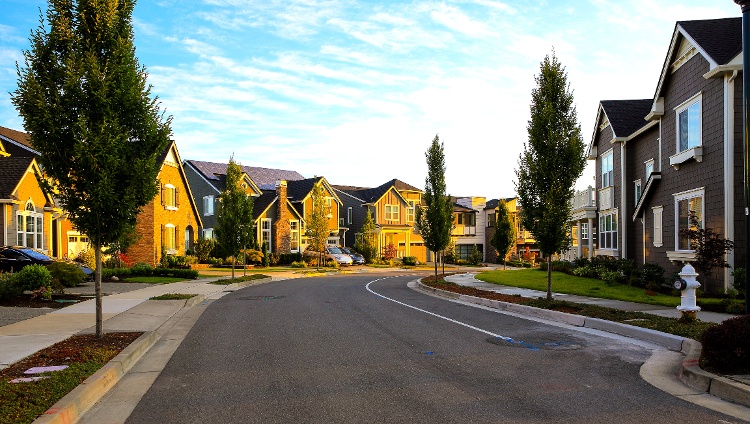Class B real estate is often called the “gravy train” of investment property because of the steady cash flow combined with a balanced mix of risk and reward.
In this article we’ll explain what this property class is, some of the potential drawbacks and biggest benefits to owning Class B rental property, and where to find the best Class B real estate to invest in.
Types of real estate property classes
Investment real estate is categorized into four different classes: A, B, C, and D.
Real estate property classes are one way investors, lenders, and tenants rank “how good” a property is at a given point in time. Similar to getting a grade in school, Class A property is the best, followed by Class B, C, and finally D.

What Makes a Property Class A, B, C, or D?
Classifying real estate is useful within the same market or submarket to compare one property to another. However, because there are no industry-wide standards for real estate property classes, a building that is ranked as ‘A’ in one market could receive a ‘B’ or even a ‘C’ rating in a different market.
With that in mind, there are several different criteria real estate stakeholders use for assigning a class grade to real estate:
- Age
- Condition
- Location
- Amenities
- Tenants
- Cash flow
- Appreciation
These factors interact with another to create different points along the scale of risk and reward.
For example, a Class A property is one that is newer with no maintenance issues and rented to the most qualified tenants. It’s more expensive to buy a Class A property, so while the risk of repairs and a bad tenant are significantly reduced, the cash flow is lower as well.
It’s also important to note that property classes can differ when comparing property types, like single-family vs multifamily vs commercial real estate.
Class D property is on the other end of the risk and reward spectrum. When real estate agents and sellers describe a house as having “good bones” what they’re usually talking about is a Class D.
While the structure may be sound, the house will need to be gutted and completely rehabbed before it can be rented to a tenant. There’s a lot of potential upside, but a significant amount of risk as well.
That’s why most real estate investors focus on Class A, B, and C while leaving D property to people who have a very high tolerance for risk.
Among these three classes, Class B property is most often considered to be the ‘sweet spot’ for passive income investors buying-and-holding over the long term.
What is Class B Real Estate?
Class B real estate is the most sought after type of property for income investors for several reasons.
There’s usually a consistent demand from median income tenants such as police and teachers, service and retail workers, and working class families. These types of tenants normally take good care of the property because they view a single-family house as the best place to live.
Occupancy rates are higher, cash flow is more predictable, and potential appreciation is greater. Cap rates and total returns are larger as well because Class B houses are less expensive to purchase than newer Class A property.

Characteristics of Class B Real Estate
Now let’s take a look at some of the general criteria that make a property Class B. But, keep in mind that these factors may differ slightly depending on the market you’re investing in.
1. Age
Houses are generally between 10 and 20 years old and often described as ‘average’ or ‘plain vanilla’. However, in markets where there is a significant amount of new construction, Class A property can turn into Class B property in just a few years.
2. Condition
Property is well maintained with little or no deferred maintenance. Finishings such as flooring and fixtures are above average, although they may need to be updated within the next few years.
3. Location
Neighborhoods are often described as middle class or working class. School districts are above average and crime rates are relatively low.
4. Amenities
Good access to shopping centers, entertainment, restaurants, and parks and recreation. Class B property in urban areas is close to public transportation.
5. Tenants
Majority of tenants are middle-income earners such as government employees, service workers including retail and restaurant employees, gig workers, and retirees.
When the economy begins a downward cycle, prospective tenants may also include people earning higher incomes looking for a more affordable place to rent.
6. Cash flow
Although Class C rental property is traditionally thought of as a “cash cow”, Class B real estate also has a higher percentage of cash flow compared to the cost of ownership.
Purchase prices of Class B property are lower than Class A because some investors view B property as a higher risk than A. In turn, cap rates, NOI (net operating income), and overall yields are greater in Class B rental real estate.
7. Appreciation
In general, the appreciation of Class B real estate should follow the average appreciation trend of the market the property is located in. But there are a couple of caveats.
First, in areas where the demand for rental property from investors and tenants is strong, Class B property may gain more in value than Class A because the B property was acquired at a lower purchase price.
On the other hand, a Class B property could turn into a Class C property if it is located in a submarket where the neighboring houses aren’t maintained, due to owner neglect or bad tenant screening. Class B property might be considered Class C due to the declining condition of the other houses in the immediate area.
8. Value add
Houses located where neighborhoods are in the process of regentrifying can offer the perfect value add opportunity for the Class B rental property investor.
In addition to matching the normal appreciation trend of the overall market, when an area becomes trendy or a new employer comes to town, appreciation in the neighborhood may see an even bigger boost.
When this occurs, investors can add value to the property by updating the fixtures, flooring, and curb appeal of the property. There’s a higher degree of confidence that the cost of the value add improvements will more than pay for themselves with additional rental income and increase in property market value.
9. Financing
Lenders view single-family Class B houses as having a slightly higher risk than brand new property. Investors should expect to make a larger down payment with a conservative LTV of at least 25%. Interest rates may be slightly higher although loan terms will still be for 30 years.
Even though the initial financing of a Class B property may cost more, many investors view the solid cash flow and potential upside in market value as justifying the extra mortgage expense.
Property can always be refinanced, and if the amount of equity spikes due to value add renovations or neighborhood gentrification, a cash out refinance or HELOC can be used to turn the accrued equity into additional investment capital.
How to Find Class B Property
Prior to the launch of Roofstock's Marketplace, investors looking for Class B rental property to invest in could easily spend days or weeks analyzing data.
In today’s day and age, detailed and accurate data for turnkey single-family Class B rental houses is easy to find on Roofstock.
Key search criteria to use when looking for Class B housing on Roofstock to invest in include property age, neighborhood and school rating, and cap rate:
- Property age: From 10 to 20 years old, with an original construction date of about the year 2000
- Neighborhood rating: Three to four stars, or average to above average
- School rating: Rating of 6, 7, or 8 on a scale of 1 through 10, with 10 being the best or most exclusive school districts
- Cap rate: Higher than the market average due to the larger amount of net income compared to the lower purchase price of the property
All of these search criteria interact with one another. For example, houses in a 5 star neighborhood or a school district with a rating of 9 or 10 almost always cost more to purchase and have a lower cap rate due to the lower NOI.
However, investors can also use the Marketplace to locate Class B houses with a solid upside potential:
- Select a Neighborhood Rating of 5 stars
- Look for houses with the highest cap rates
- Compare property with high cap rates to similar houses in the same market
- Review the summary and financial reports for each property with a high cap rate in a 5 star neighborhood
Houses with a cap rate that’s higher than normal for the area may offer the opportunity to add value by increasing the rent or making minor repairs if any have been deferred.

Is Investing in Class B Property a Good Idea?
Investors using the buy-and-hold strategy may find the solid cash flow and long-term upward appreciation trend of Class B property the perfect match for a rental property portfolio.
Pros of investing in Class B houses
- Average property with market rents sees demand from a large percentage of prospective tenants
- Middle-class tenants such as government employees, service workers, and families usually take better care of the property and rent for longer periods of time
- Class B houses have higher cash flows and net incomes due to lower purchase prices
- Potential to add value and reposition Class B housing into Class A if the neighborhood begins to regentrify
- Provides a balanced blend of risk and return
Cons of investing in Class B houses
- Investors with a hold time longer than five years may need to spend money on minor updates and improvements
- Class B property could become Class C in neighborhoods where adjacent property isn’t well maintained
- Investors with a high risk profile looking for property with a speculative pop in appreciation may be disappointed with the longer-term appreciation trend of Class B property
Final Thoughts
Class B real estate is often thought of as the ‘sweet spot’ or ‘gravy train’ for income property investors. That’s because out of the four real estate classes, Class B rental property offers the most balanced blend of risk and reward:
- Class B property is usually around 10 years old.
- Prospective tenants are middle-income and may work for the government or in service and retail trades.
- Higher income earning renters are also attracted to Class B property when the economy cycles downward.
- Class B rental property generates higher returns with a greater upside potential for appreciation because purchase prices are lower.









